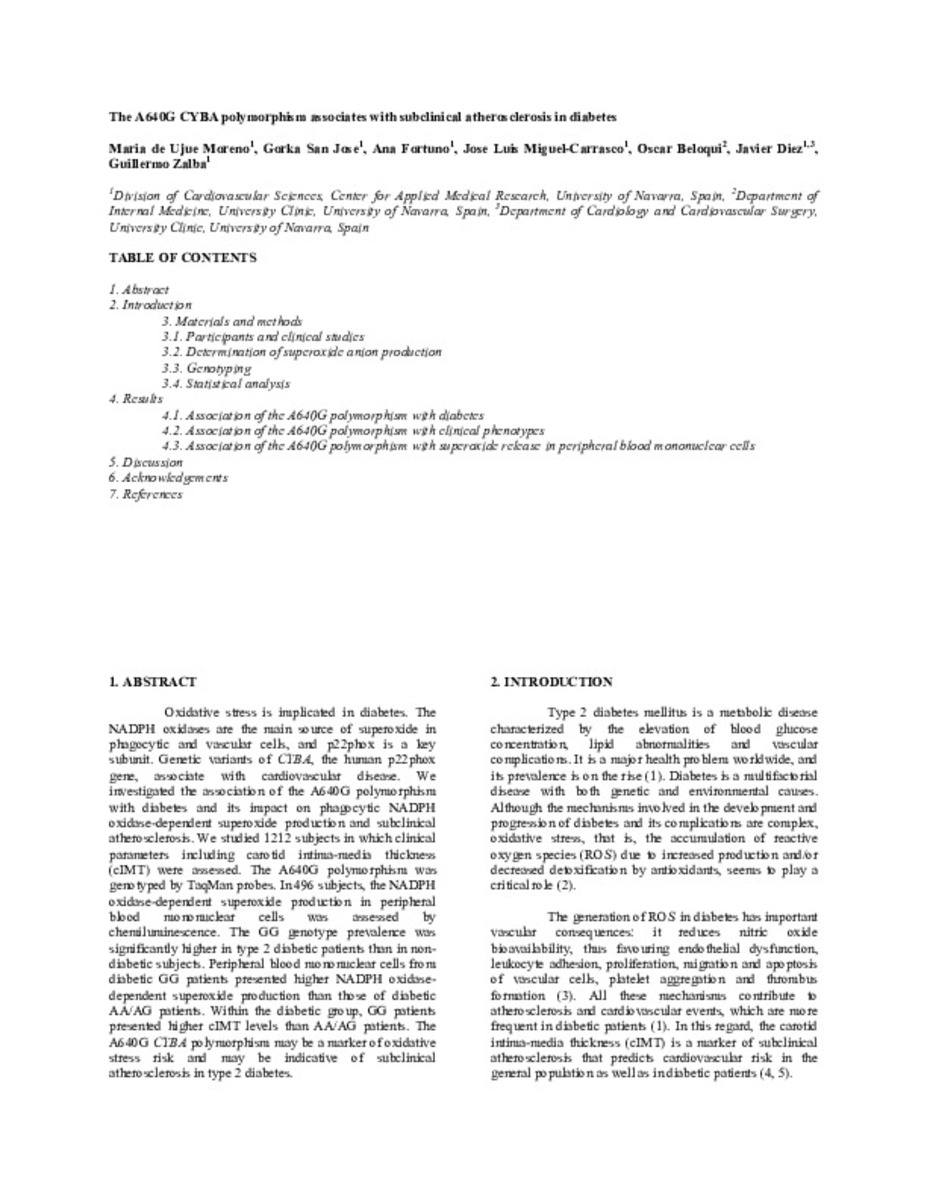The A640G CYBA polymorphism associates with subclinical atherosclerosis in diabetes
Palabras clave :
Atherosclerosis
Diabetes
Intima-Media Thickness
NADPH oxidase
Oxidative stress
A640G polymorphism
Fecha de publicación :
2011
Editorial :
Frontiers in Bioscience
Cita:
Moreno MU, San Jose G, Fortuño A, Miguel-Carrasco JL, Beloqui O, Diez J, et al. The A640G CYBA polymorphism associates with subclinical atherosclerosis in diabetes. Frontiers in Bioscience 2011;June 1:1467-1474
Aparece en las colecciones:
Estadísticas e impacto
0 citas en

0 citas en

Los ítems de Dadun están protegidos por copyright, con todos los derechos reservados, a menos que se indique lo contrario.










